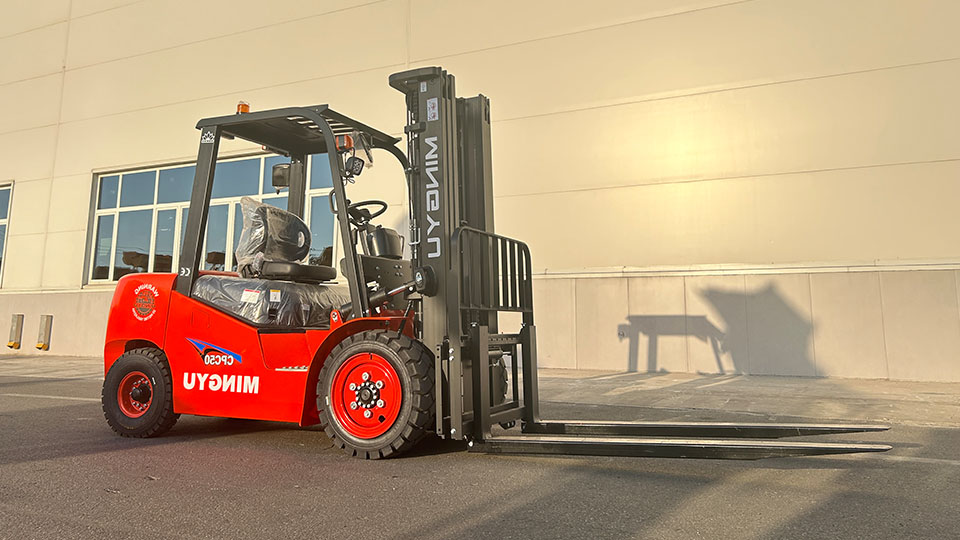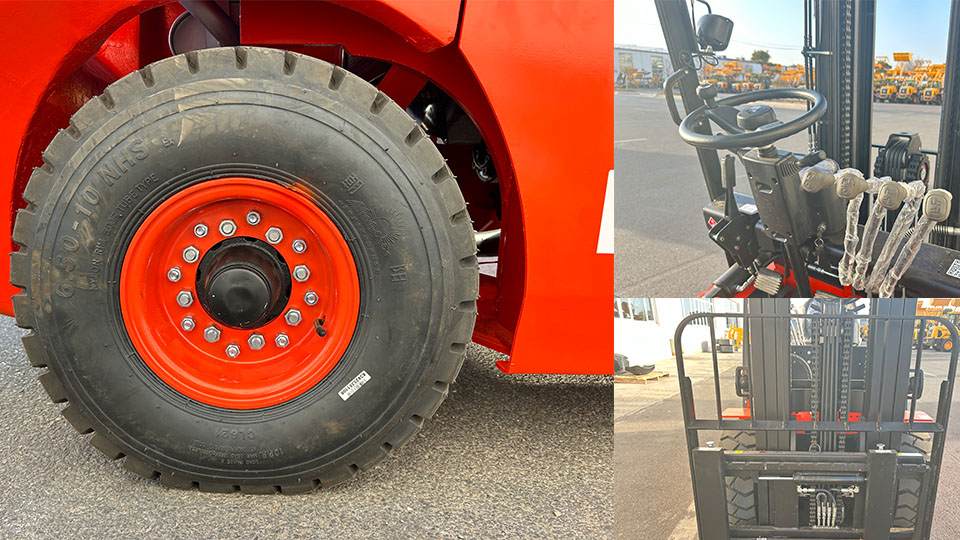
Forklifts are indispensable tools in the world of material handling and logistics. They come in various shapes, sizes, and types, each designed to meet specific needs in different industrial environments. One of the most common questions that arise when dealing with forklifts is: "How much does a forklift weigh?" The answer to this question is not straightforward, as the weight of a forklift can vary significantly depending on several factors such as its type, lifting capacity, and intended use. In this article, we will explore the different types of forklifts, their typical weights, and the factors that influence their weight.
Types of Forklifts and Their Weights
1. Counterbalance Forklifts
Counterbalance forklifts are the most common type of forklifts used in industrial settings. They are designed with a counterweight at the rear of the machine to balance the load being lifted at the front. The weight of a counterbalance forklift can range from 2,000 pounds (907 kg) for smaller models to over 15,000 pounds (6,804 kg) for heavy-duty models. The lifting capacity of these forklifts typically ranges from 3,000 to 15,000 pounds (1,361 to 6,804 kg). The weight of the forklift is directly related to its lifting capacity; the higher the capacity, the heavier the forklift needs to be to maintain stability.
2. Reach Trucks
Reach trucks are specialized forklifts designed for narrow aisle operations. They have a unique mast and reach mechanism that allows them to lift and move pallets in tight spaces. The weight of a reach truck is generally lighter than that of a counterbalance forklift, typically ranging from 3,000 to 6,000 pounds (1,361 to 2,722 kg). This lighter weight is due to their specialized design, which focuses on maneuverability and precision rather than heavy lifting capacity. Reach trucks are ideal for warehouses with limited space and high-density storage.
3. Pallet Jacks
Pallet jacks, also known as pallet trucks or hand pallets, are the simplest and lightest type of forklifts. They are designed for manual operation and are used for moving pallets over short distances. The weight of a pallet jack ranges from 100 to 300 pounds (45 to 136 kg), depending on its construction and capacity. Pallet jacks are not intended for lifting heavy loads, and their primary function is to provide a convenient way to move pallets around a warehouse or storage area.

4. Order Pickers
Order pickers are another specialized type of forklift designed for picking and moving individual items rather than entire pallets. They are equipped with a platform or seat for the operator to stand or sit on while picking items from shelves. The weight of an order picker can range from 1,500 to 3,000 pounds (680 to 1,361 kg). These forklifts are designed for efficiency in picking operations and are commonly used in distribution centers and warehouses where a large number of items need to be picked and moved.
5. Rough Terrain Forklifts
Rough terrain forklifts are designed for outdoor use and are built to handle uneven and rough surfaces. They are equipped with large, rugged tires and a powerful engine to provide the necessary traction and power for lifting heavy loads in challenging environments. The weight of a rough terrain forklift can range from 8,000 to 20,000 pounds (3,629 to 9,072 kg), depending on its lifting capacity and intended use. These forklifts are essential for construction sites, lumberyards, and other outdoor industrial operations.
Factors Influencing Forklift Weight
1. Lifting Capacity
The lifting capacity of a forklift is one of the most significant factors that influence its weight. A forklift with a higher lifting capacity requires a heavier counterweight to maintain stability when lifting heavy loads. For example, a counterbalance forklift with a lifting capacity of 15,000 pounds (6,804 kg) will be much heavier than one with a capacity of 3,000 pounds (1,361 kg). The counterweight is essential for preventing the forklift from tipping over when lifting heavy loads, and its weight is directly proportional to the lifting capacity of the forklift.
2. Design and Construction
The design and construction of a forklift also play a crucial role in determining its weight. Forklifts with more complex designs, such as reach trucks and order pickers, tend to be lighter than counterbalance forklifts due to their specialized functions. The materials used in the construction of a forklift also affect its weight. For example, a forklift made from high-strength steel will be heavier than one made from lightweight aluminum, but it will also be more durable and capable of handling heavier loads.
3. Stability and Safety
Stability and safety are critical considerations in the design of forklifts, and they directly impact their weight. Forklifts are designed to be stable and safe to operate, even when lifting heavy loads. The weight distribution of a forklift is carefully calculated to ensure that it remains stable and does not tip over. This means that the weight of the forklift must be distributed in such a way that the center of gravity is low and close to the rear of the machine. The counterweight at the rear of a counterbalance forklift is a prime example of how weight distribution is used to enhance stability and safety.

Importance of Knowing Forklift Weight
Understanding the weight of a forklift is essential for several reasons. Firstly, it helps in selecting the right forklift for a specific job. Different types of forklifts have different weight capacities, and choosing the right one for the job ensures efficiency and safety. Secondly, knowing the weight of a forklift is crucial for compliance with safety regulations. Forklifts must be operated within their weight and lifting capacity limits to prevent accidents and injuries. Finally, the weight of a forklift can also impact its fuel efficiency and maintenance requirements. Heavier forklifts generally consume more fuel and require more frequent maintenance, which can add to operational costs.
Conclusion
In conclusion, the weight of a forklift can vary significantly depending on its type, lifting capacity, and design. Counterbalance forklifts are the heaviest, with weights ranging from 2,000 to 15,000 pounds, while pallet jacks are the lightest, weighing between 100 and 300 pounds. Understanding the factors that influence forklift weight, such as lifting capacity, design, and stability, is essential for selecting the right forklift for a specific job and ensuring safe and efficient operations. Whether you are operating a forklift in a warehouse, construction site, or distribution center, knowing the weight of your forklift is crucial for compliance with safety regulations and optimizing operational efficiency.
Name: selena
Mobile:+86-13176910558
Tel:+86-0535-2090977
Whatsapp:8613181602336
Email:vip@mingyuforklift.com
Add:Xiaqiu Town, Laizhou, Yantai City, Shandong Province, China